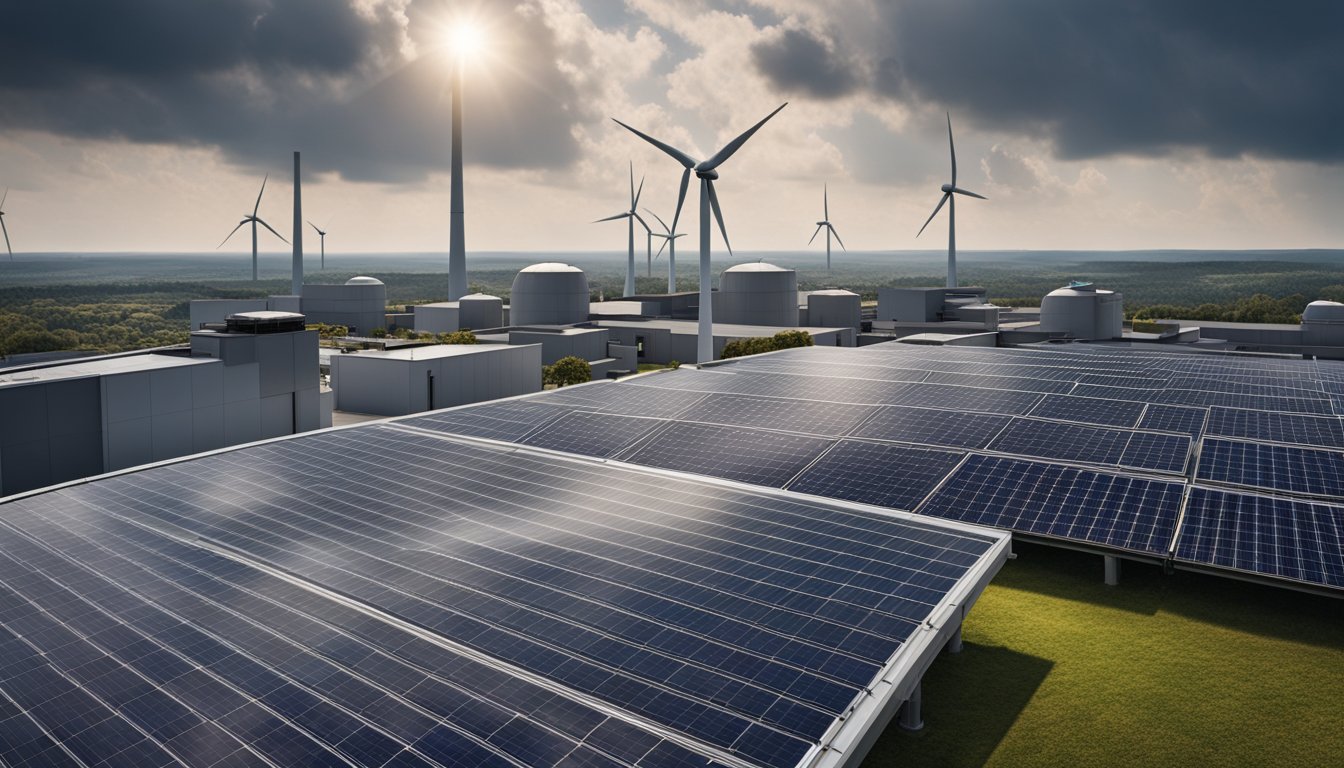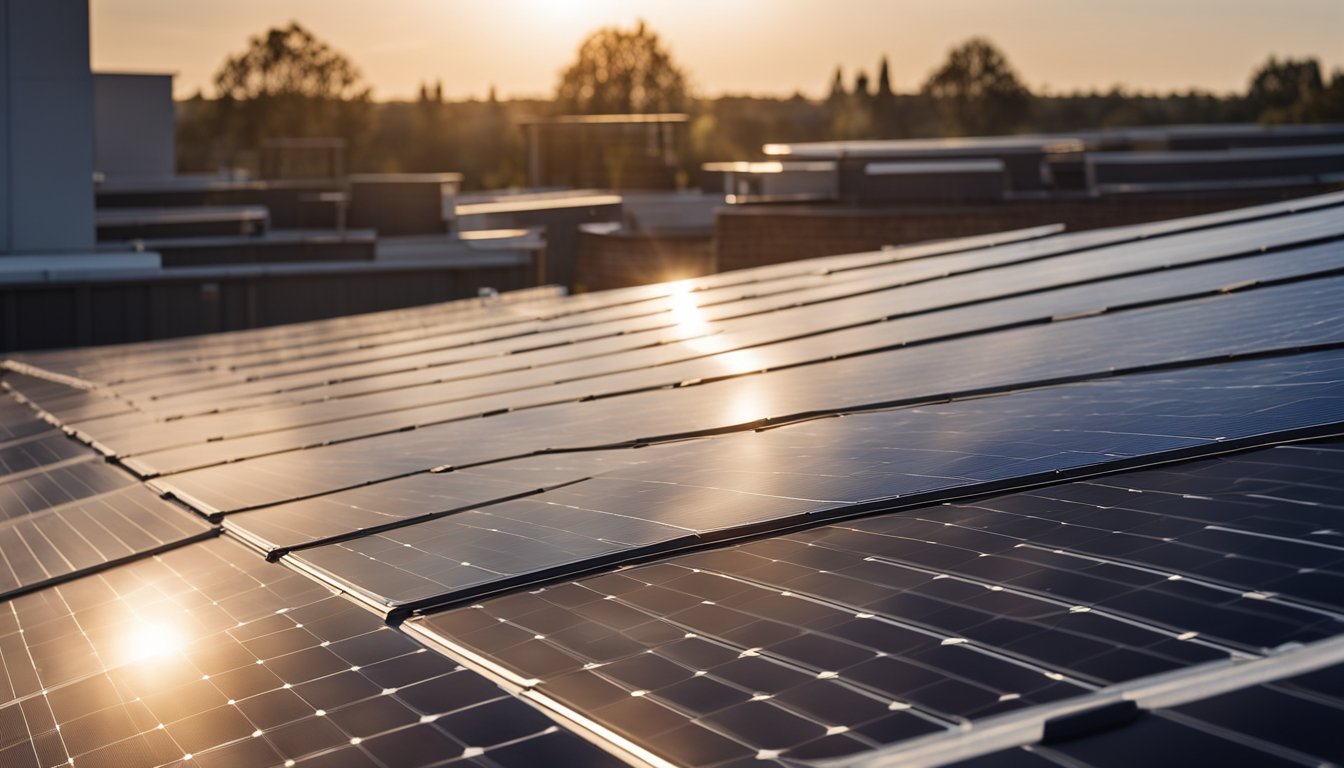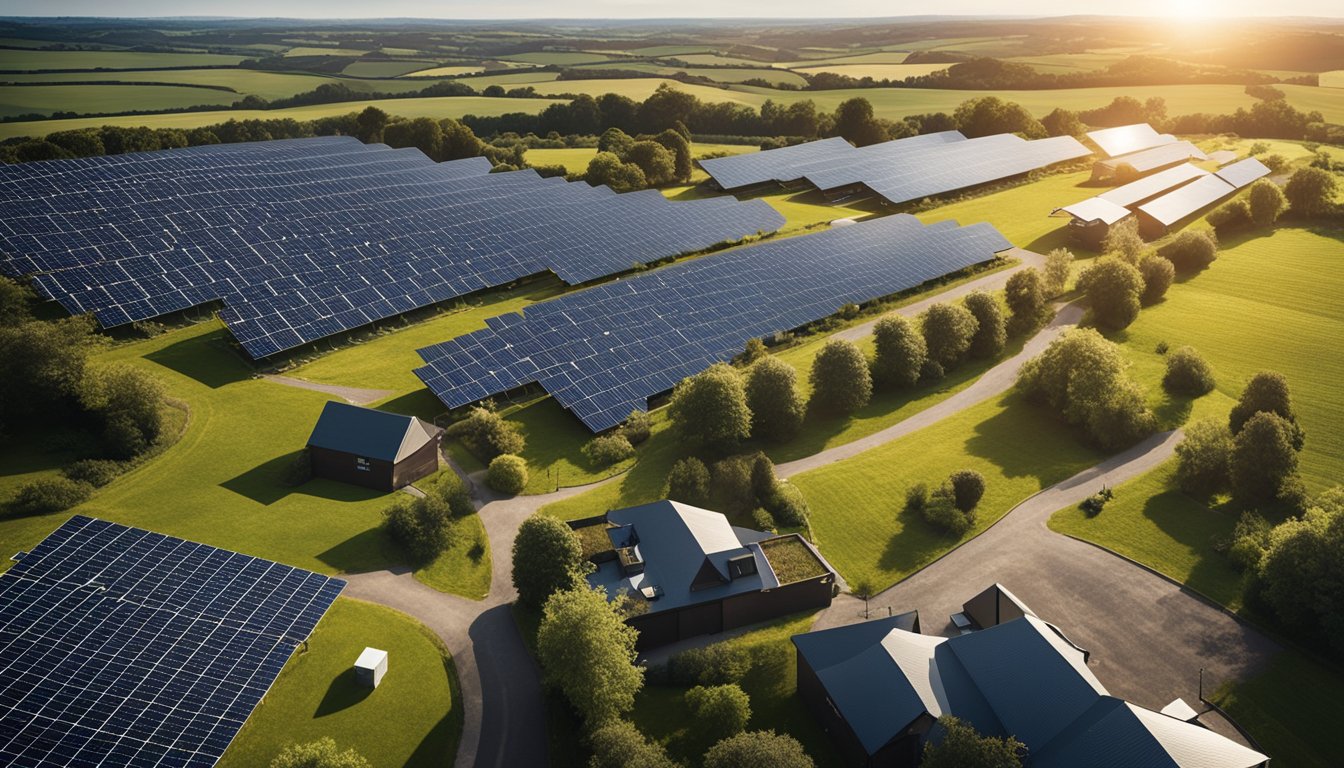Late updated: 06 May 2025 15:05
Written by: Eleanor Hartman
Exploring Solar Energy Trends in the UK: Current Developments and Future Prospects
Exploring the current landscape of solar energy in the UK offers us fascinating insights into how this sustainable power source is transforming the energy market. The UK's solar sector has been buoyed by innovative technologies and has seen substantial growth, with a surge in the use of bifacial modules and string inverters across numerous projects. These advancements enhance the efficiency and effectiveness of solar energy systems, playing a vital role in the nation's renewable energy strategy.

Emerging trends further highlight solar energy's importance in the UK's clean energy transition. As solar panel efficiency improves, the technology becomes more viable and attractive to investors and consumers alike. This shift reflects a critical movement towards more sustainable energy solutions, aligning with governmental policies aimed at reducing carbon emissions and increasing renewable energy reliance.
Key Takeaways
- Solar energy technology is advancing rapidly in the UK.
- The sector's growth is driven by policy incentives and technological innovations.
- Solar energy plays a key role in the UK's move towards renewable energy.
Current State of Solar Energy in the UK
In recent years, the solar energy landscape in the UK has seen remarkable growth in capacity and installations. Despite challenges with infrastructure, regional adoption rates have steadily increased. Government support through policies and incentives has played a key role in driving these developments.
Solar Capacity and Installations
The UK has made significant advances in enhancing its solar capacity, with installations contributing notably to its renewable energy portfolio. By 2025, solar energy accounted for roughly 3.38% of the UK's renewable energy output. This increase in capacity can be attributed to technological advancements like bifacial modules and string inverters, which are now prevalent in the majority of solar projects. Bifacial modules are employed in about 87% of projects, highlighting their importance in efficiency improvements. As solar panel prices continue to decline, both residential and commercial installations have become more accessible, benefiting consumers and UK businesses.
Adoption Rates Across Regions
Regional adoption varies across the UK, with some areas experiencing higher rates of solar energy integration. Southern regions tend to lead in installations due to more favourable weather conditions and higher exposure to sunlight. For instance, the South East and South West of England are among the regions with the highest growth in solar panel installations. Urban areas are also embracing the use of building-integrated photovoltaics, which seamlessly integrate with existing structures. This has facilitated urban expansion of solar power use and prompted businesses and homeowners to invest in solar technology to reduce energy bills.
Government Policies and Incentives
Government policies have been pivotal in the expansion of solar energy in the UK. The introduction of incentives, such as the Feed-in Tariff (FIT), encouraged early adoption by offering payments for surplus energy fed back into the grid. Although the FIT scheme closed to new applicants in 2019, other incentives such as grants and subsidies continue to support solar uptake. The government also focuses on promoting the Green Homes Grant, and tax reliefs, essential in motivating investments in solar installations for both domestic and commercial buildings. As policy evolves, further support ensures the continued growth and integration of solar energy in the UK's renewable strategy.
Emerging Solar Energy Trends and Future Outlook

As the UK transitions towards more sustainable energy solutions, solar energy is playing a crucial role. Technological advances, larger solar projects, and the integration of solar with storage solutions are driving this change. Our focus remains on improving efficiency, reducing carbon footprints, and reaching net-zero targets.
Technological Advancements and Efficiency
The solar industry in the UK is seeing rapid technological advancement. Innovations in solar panel efficiency, such as bifacial modules and building-integrated photovoltaics (BIPV), are noteworthy. Bifacial panels harvest sunlight from both sides, improving energy yield. BIPV integrates solar technology into building materials, offering aesthetic and functional benefits. Increased efficiency results in lower energy costs, enhancing the overall feasibility of solar projects.
Research into advanced materials is also significant. Perovskite materials, for instance, promise higher efficiency and are cheaper to produce than traditional silicon-based panels. These innovations collectively contribute to the compound annual growth rate (CAGR) in the solar sector, positioning the UK as a leader in renewable energy generation.
Solar Farms and Large-scale Projects
Large-scale solar farms are central to decarbonisation efforts. Projects like floating solar farms use bodies of water to generate energy without taking up valuable land space. They align with our sustainability goals by preserving land for agriculture and other uses while contributing to the energy mix.
The UK is also exploring power purchase agreements (PPAs) to spur investment in solar energy projects. Companies commit to buying energy from solar providers, ensuring project financial viability. Solar farms also bolster energy security. As fossil fuel dependency decreases, the UK can reduce its carbon footprint, advancing its climate change objectives.
Integration with Energy Storage
Integration of energy storage technologies with solar systems is transforming energy sector dynamics. Energy storage allows excess energy capture during sunny periods, ensuring a reliable supply during cloudy days or at night. Advanced storage solutions, like lithium-ion batteries, have declining costs, making them more accessible.
Pairing solar with storage optimises electricity production and fosters a dependable energy supply. This integration aids in mitigating the intermittency challenges associated with renewable energy. As energy landscapes evolve, emphasis on enhancing storage capacity remains. This ensures a smoother transition from conventional energy sources, such as coal and gas, to cleaner alternatives.
The Role of Solar in Achieving Net Zero
Solar energy is indispensable in our pursuit of net-zero carbon emissions. Solar contributes to significant reductions in reliance on fossil fuels, aligning with UK climate goals. Solar deployment reduces greenhouse gas emissions, vital for battling global climate change.
Government support through policies and incentives, including feed-in tariffs, encourages increased adoption. By enhancing energy efficiency and promoting renewable energy generation, solar helps in cutting emissions and reducing the UK's carbon footprint. The expanding solar sector's influence is palpable as we progress towards a more sustainable, clean energy future.
Frequently Asked Questions

In this section, we examine common inquiries surrounding solar energy in the UK. We highlight the technological progress and the emerging trends, as well as government policies affecting adoption rates and the role of solar energy compared to other renewables.
How has the adoption of solar photovoltaic (PV) technology progressed in the UK?
The adoption of solar PV technology in the UK has seen significant growth. The increase in installations is largely due to advancements in technology and cost reductions. Solar farms have become a familiar sight, contributing to the national grid and boosting renewable energy figures.
What are the projections for solar power's contribution to the UK's energy mix in the coming years?
Solar power is expected to play a growing role in the UK's energy mix. Projections indicate a steady increase in electricity generation from solar, supporting the government's commitment to achieving net-zero emissions. By 2025, solar energy aims to power millions of homes, expanding its share in the renewable energy sector.
To what extent are solar energy solutions being implemented by UK businesses and households?
Both businesses and households in the UK are increasingly adopting solar energy solutions. Homeowners are installing solar panels to reduce electricity bills, while businesses seek to improve their sustainability profiles. The trend signifies a societal shift towards greener energy consumption and highlights the long-term financial benefits of solar investments.
Are there any significant governmental policies influencing the solar energy sector in the UK?
Governmental policies play a crucial role in shaping the solar energy sector. Incentives such as feed-in tariffs and grants have historically encouraged installations. Regulations continue to evolve, focusing on facilitating easier access to solar technology and promoting innovation within the industry.
What advancements in solar technology are currently emerging within the UK market?
The UK market is witnessing several advancements in solar technology. Innovations include more efficient solar panels, energy storage improvements, and the integration of smart grid technologies. These developments aim to enhance energy efficiency and reliability, making solar energy a more appealing option for consumers and businesses alike.
How does the UK's solar energy output compare with other renewable energy sources domestically?
Solar energy contributes significantly to the UK's renewable energy output. Although wind power remains dominant due to geographical advantages, solar energy is rapidly closing the gap. Continued investment and technological innovations are enabling solar to compete more effectively and enhance its share of the renewable energy landscape.